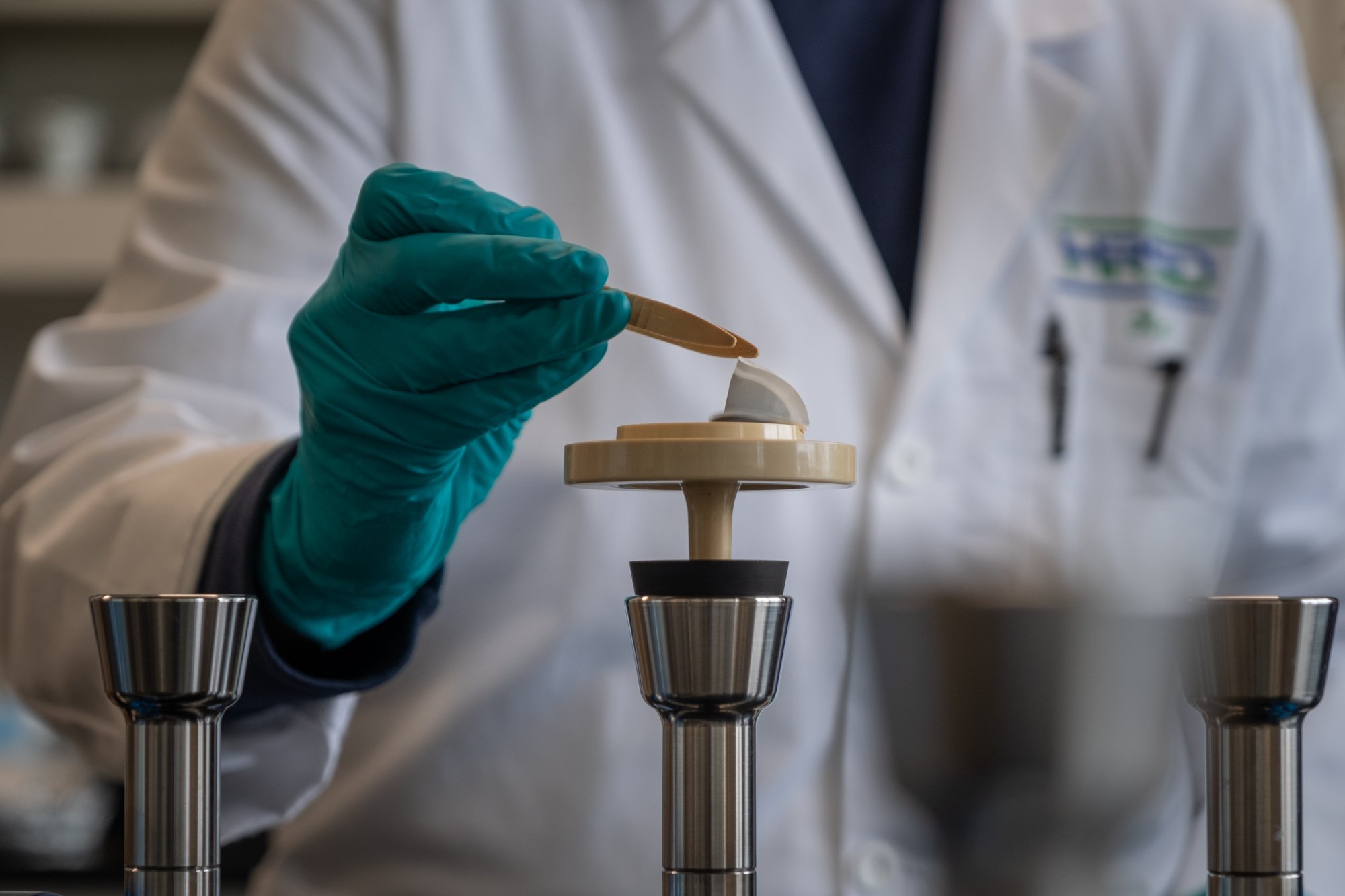
Marcos Davila-Banrey and Jon Nelson prepare to capture a wastewater sample for the Hampton Roads Sanitation District COVID surveillance program.

A sewage treatment plant in Norfolk, Va., is one of the sites where workers collect wastewater samples to test for COVID trends in the nearby community.

Wastewater — from nearby homes, businesses, toilets and sinks — ends up at the Virginia Initiative Plant in Norfolk, Va., where it gets routed through various stages of treatment before being released into the Chesapeake Bay.

When the wastewater arrives at the lab, acid is added to positively charge virus particles in the sample. The water is then poured over a negatively-charged filter to better capture COVID virus particles.

Kat Yetka processes the sample at the Hampton Road Sanitation District lab in Virginia Beach, Va.

From a one-liter bottle of wastewater to a small folded paper filter compact enough to fit into a test tube, the sample contains everything the lab needs to test it for COVID virus particles.
Tracking health threats, one sewage sample at a time
Wastewater surveillance is a method of quickly — and sometimes more accurately —tracking viruses, bacteria and diseases in communities. The data doesn’t rely on people visiting their doctor or reporting illnesses. Instead, it monitors traces of pathogens like flu or mpox in stool that gets flushed down the toilet every day.
Early in the pandemic — months before the Centers for Disease Control and Prevention began a nationwide initiative — a team of researchers in Norfolk, Va., led by Raul Gonzalez began collecting wastewater data to monitor the virus’ spread. These days, it takes about two days for the researchers to collect a sample and process the data at the Hampton Roads Sanitation District
The data then ends up on a public dashboard where anyone in the community can track the rise or fall of COVID. For the Virginia Beach Department of Public Health, it means they can better target testing sites or vaccine clinics.
Read the full story on NPR.org here.